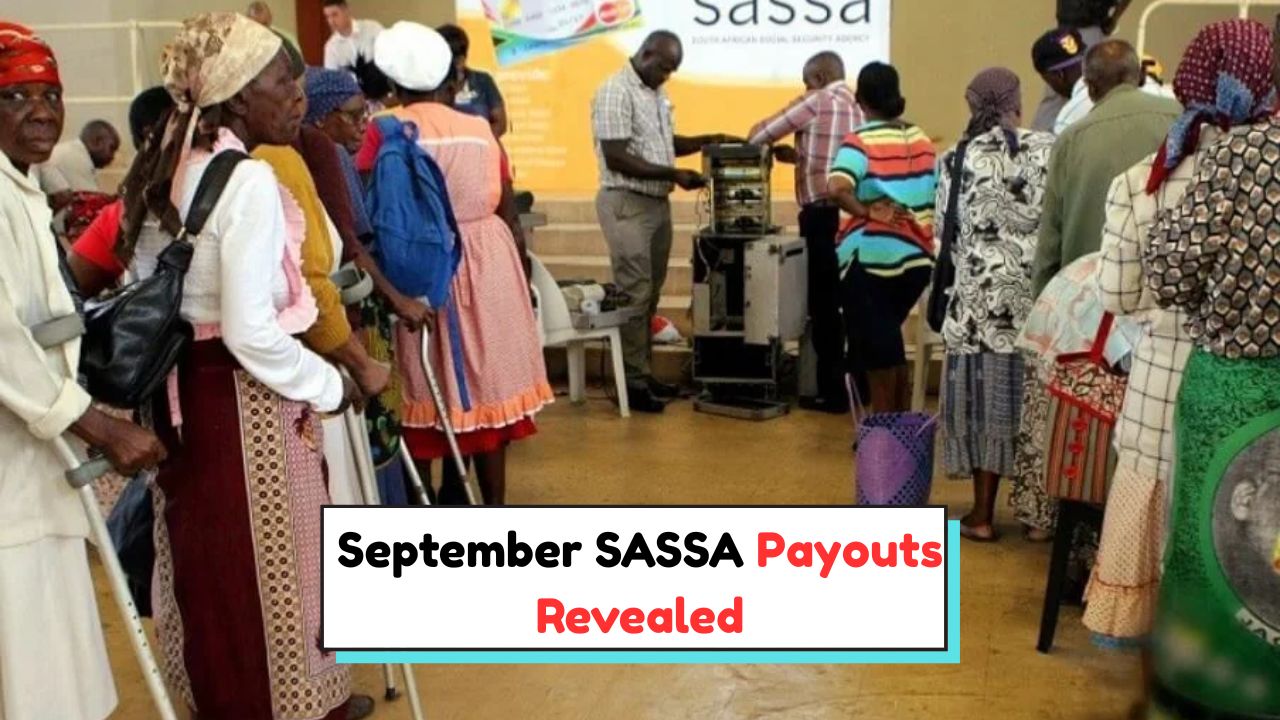2025 SASSA Payout Alert – Big update for beneficiaries: September 2025 SASSA payouts are rolling out, and many readers are asking whether they’ll see R2,350, R560 or R1,250 in their accounts this month. Your amount depends on your approved grant type, qualifying dependants, and any recent changes to banking or identity details. In plain terms, if your grant was approved and your verification checks cleared, the payment should reflect on or shortly after your allocation day. If you switched banks, expect a short verification delay before the deposit lands. To avoid queuing problems, remember that funds stay in your card or bank once paid—there’s no need to rush on day one. Below we explain who typically fits into each bracket, how to confirm your status fast, what to do about delays, and the documents to keep ready. Read carefully, follow the checklist, and you’ll know exactly where you stand for the September cycle. Keep your phone nearby for bank SMS alerts, but always verify the sender before tapping links. If anything looks suspicious, check your balance using your usual secure channel instead.
Who could get R2,350, R560 or R1,250 in September 2025?
Amounts vary by grant category and personal circumstances. For example, higher brackets like around R2,350 are often seen where a primary grant aligns with qualifying age or disability criteria, sometimes alongside additional allowances or lawful top-ups. Mid-range totals such as roughly R1,250 can appear when a beneficiary receives a single approved grant without add-ons, while lower figures like about R560 may reflect partial periods, a reinstated benefit after review, or one qualifying dependant only. Remember, combinations matter: caregivers supporting more than one child may see a different total than an individual on a single benefit; likewise, any means-test change or income detected by verification can move you up or down. If you recently updated your ID, banking, marital status, or address, that update can temporarily affect calculation or timing. Use the official channels to confirm the exact amount assigned to your ID number for this month—don’t rely on rumours or forwarded messages.
Fast ways to check your September status and amount
Start by using the official online status portal linked from SASSA’s website, then confirm your bank balance using your banking app, ATM, or retailer cash-out service. Have your ID number and mobile ready; you may be asked for a one-time PIN to view personal details. If your profile shows “approved” with a payment reference, your funds should reflect shortly according to your bank’s clearing times. No internet? Visit your nearest post-banking point or service office with your ID and beneficiary card for assistance. Changed banks recently? Ensure your new account is active, in your own name, and not frozen; mismatches trigger verification holds. If your status shows “pending” or “referred,” wait for the next refresh cycle, then recheck. Avoid third-party login links, keep screenshots of your status page, and write down the case number if you escalate—those records speed up fixes. If you use a community Wi-Fi or shared device, log out fully and clear the browser history to protect your personal data. Keep your SIM active so you can receive bank and verification codes.
Payment dates, queues and bank delays—what to expect
SASSA typically sequences grant categories over several days to ease congestion, with older persons, disability, and child-related grants not all paid on the same day. Your bank may take 24–72 hours to clear incoming funds after SASSA releases them, especially over weekends or public holidays. Merchant cash-outs can reflect faster than ATM withdrawals in some areas, but fees may apply—compare before you queue. Once money has been credited, it remains available; there’s no benefit to arriving at dawn and standing in long lines on day one. If your transaction reverses at the till, keep the slip and check your balance again later—most reversals auto-correct. For card failures, try a different POS device or ATM and verify your daily withdrawal limits. Always bring your ID, keep your phone charged, and store your card safely to prevent shoulder-surfing or skimming while in the queue. If you suspect a duplicate debit or unauthorized fee, note the time and location, then report it through your bank and the official help channels the same day for trace and reversal.
Fixing holds, rejections and mismatched details
Common blockers include identity mismatches, inactive or third-party bank accounts, income detected in means-testing, or overdue proof of life where applicable. To speed resolutions, gather your green ID book or smart card, proof of residence, bank confirmation letter, and any supporting medical or caregiver documents. Update your details only through official portals or over-the-counter at authorised points—avoid agents who promise “instant approval.” If declined, read the stated reason carefully, correct the issue, and submit an appeal within the allowed window; keep copies of every form and receipt. If you changed surnames, employment, or marital status this year, re-verify those fields so the system stops flagging you. Where fraud is suspected, block the card immediately and request a replacement, then file a formal case number for tracking. Stay patient but persistent—each refresh cycle can move a case from “referred” to “approved” once documents are in order. If a dependant’s grant is involved, ensure birth certificates and guardianship proofs are current, legible, and linked to your ID to prevent partial or reduced payouts.
